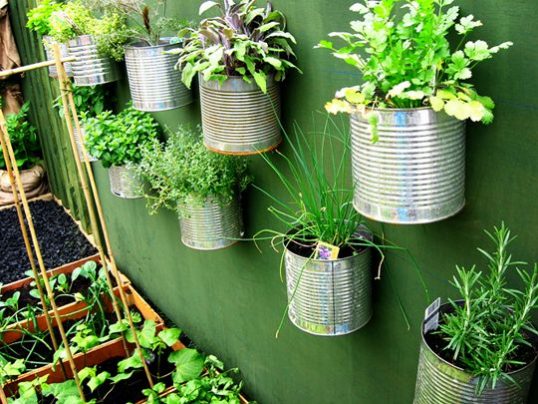What do we do with the sargassum seaweed in Xcaret?
July 23, 2019
The extra effort so that visitors from all over the world can enjoy the beaches of this Caribbean paradise
It is not a secret that a macro-algae commonly known as sargassum reaches the shores of the Mexican Caribbean every year, and that lately, it has increased. It is a situation that has led us to work for extra hours to remain as the favorite destination for all travelers looking for a perfect summer vacation.
Although it is a natural phenomenon, it is something that we cannot allow to remain on our coasts for multiple reasons, one of them is the smell and color that it gives to our beaches.
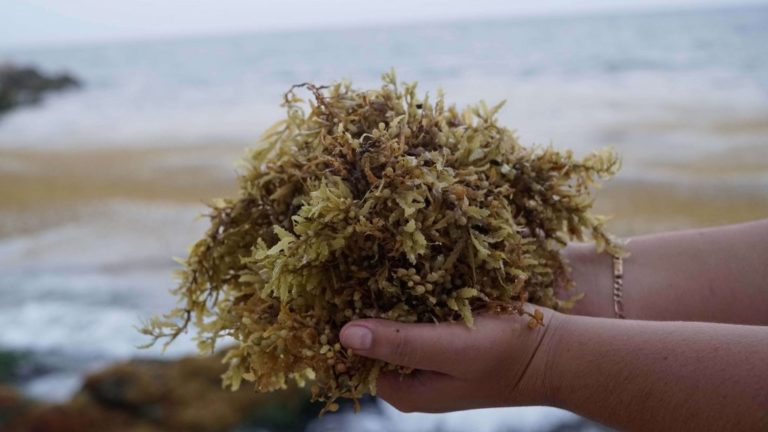
Xcaret, like many other parts of the Riviera Maya, is one of the places where sargassum sometimes arrives. If you visit the park during its hottest months, you may see a little in our waters, but that does not mean that we are not working to get rid of it.
As the title says, we are going to answer one of the most recurring questions of our visitors: What do we do in Xcaret with the sargassum?
1.- Daily monitoring
Daily at 6:30 a.m. We conduct aerial monitoring of our coasts to see the amount of sargassum that accumulated. It is important to mention that the amount of sargassum is not the same every day, there are some days in which it’s very little or nothing at all, and there are others in which there are impressive amounts that arrive.
Once the images are retrieved, the team in charge meets to act strategically. For us, the priority is to clean the areas where visitors enter the water, such as the Snorkel Cove and the beaches. After taking care of these two areas, there are also natural pools that exit the underground rivers and finally what we know as the “northern zone”, where there are a small slide and the trepachanga rope.
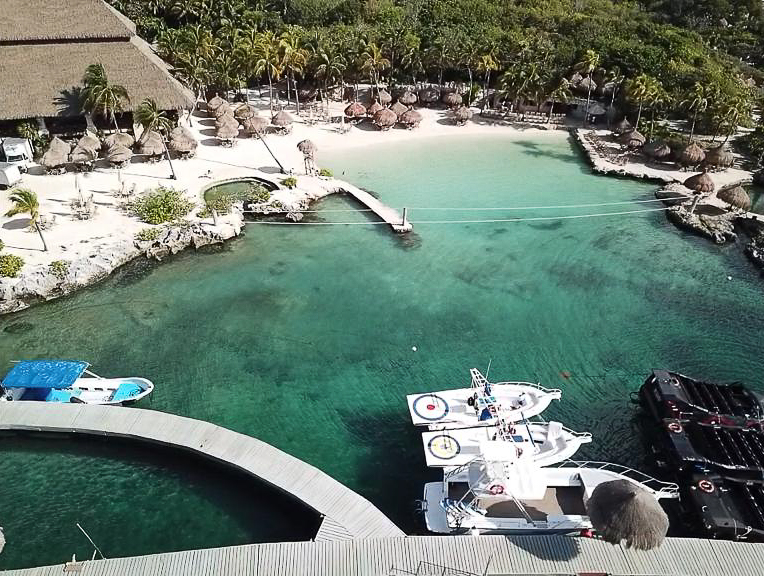
2.- Sargassum removal team
Hours before the doors of the park are opened, a team of more than a hundred people gathered in the most affected areas. With a well-studied logistics, they are prepared to remove the sargassum from the water manually, in such a way that marine ecosystems are not affected.
It is a process that requires teams that perform different functions at the same time:
1.- A team enters the water with plastic crates, fills them with sargassum, drains them and take them out of the water. Sometimes they have to wear life jackets and know how to swim when they are in very deep areas.
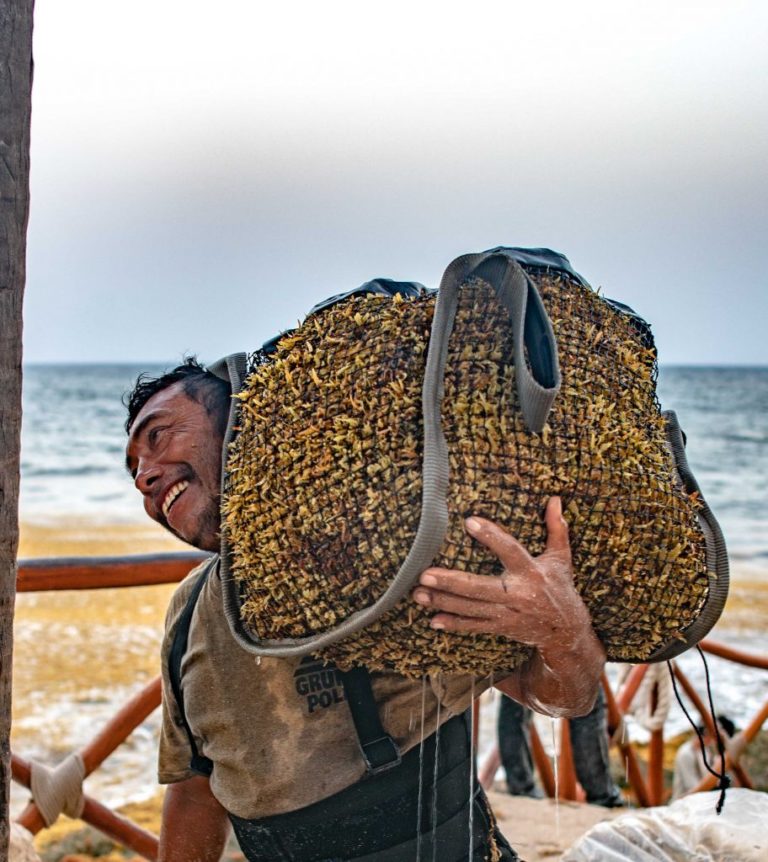
2.- Another team is responsible for finishing the draining process of the sargassum and putting it in plastic bags.
3.- Another group is responsible for carrying the bags with sargassum to where the tipper is, where they will be taken from the public areas of the park to our work areas. This is carried out through a human chain lineup, through which the bags are passed until they reach this destination.
4.- Simultaneously a team is dedicated to removing the sargassum from the bags, placing them into the transporting truck. To make this process quicker, Xcaret has a mechanical band that supports one of the brigades to fill the sargassum tipper facilitating and a lower amount of human effort required.
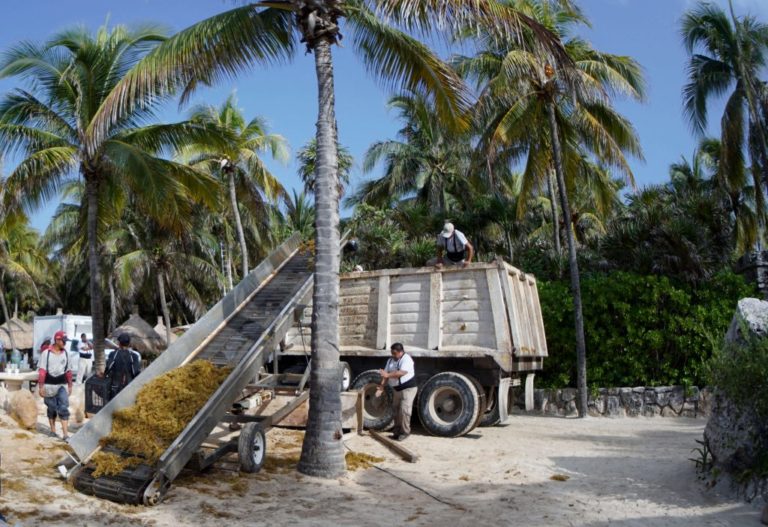
5.- Last but not least, a group of people work recovering the plastic bags to return them to the equipment that is in the water and reuse them as many times as possible.
This process must be performed daily to prevent the sargassum from releasing unpleasant odors. In the morning the work stops once the visitors arrive at the beach area, but when the park closes, they return to continue working at night.
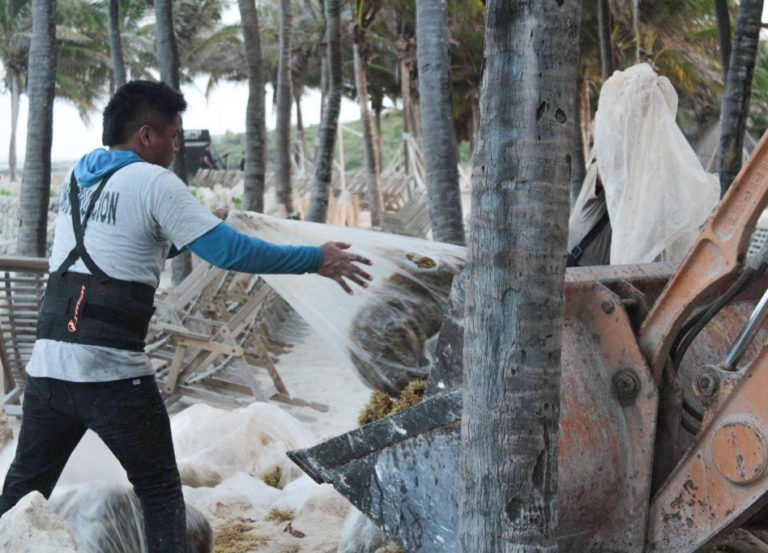
It is a team effort that requires strength, responsibility and a lot of dedication. On days when large amounts of sargassum arrive, despite the hours spent on collecting it, it could appear as if there is no progress done, which is very frustrating. However, Xcaret employees know that they are working for a greater good, that their effort is what will make the visitors who have traveled from all over the world, enjoy this Caribbean paradise.
But the process does not end here, once out of the sea, something must still be done with all that sargassum.
3.- A longer composting process
Since the park opened its doors, more than 25 years ago, composting has been made with organic waste, which serves to fertilize the land and fertilize our plants. It is a process that a team of agronomists from the Landscape Environment Area performs full time, however, since the amounts of sargassum began to increase, they were given the task of investigating how they could take advantage of it.

Due to its properties, it is not an element that can simply be added to the compost waste mix. After doing numerous tests, they concluded that the best way to introduce it is to create a mixture with what they call “crushed,” which is all the plant material that comes out of the pruning of the parks, such as branches, dried leaves, etc.
After several days of adding layers of sargassum which are sandwiched to the “crushed”, stirred it constantly and draining it until it is completely dry, the mixture is ready. It is at this stage that the use of sargassum in the compost mixture can be utilized.
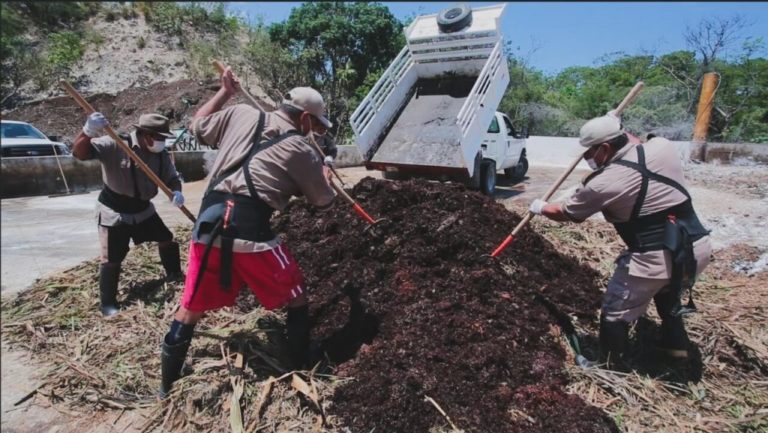
Although it has nutrients that bring benefits to the mixture, it is not a simple process since large spaces, personnel and time devoted exclusively to this are needed to achieve it. The result after two months is a nutrient-rich mixture that is used to fertilize all the green areas of Xcaret, Xplor, Xenses and other parks in the group.
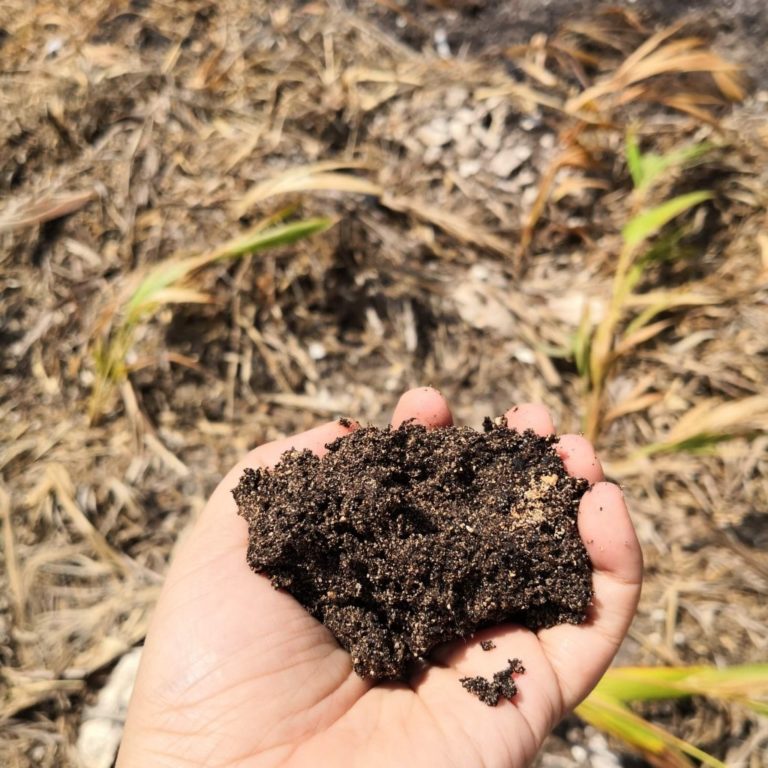
4.- Investigation work
In addition to this sargassum management process, inside and outside the sea, research is also being done at Xcaret. A team of students of the Environmental Technology Engineering degree from the Technological University of Tabasco, due to the shortage of sargassum utilization programs and its high generation on the beaches of the Mexican Caribbean, were interested in doing a project in which they are carrying out the design and construction of a bio-digester prototype to obtain biogas.
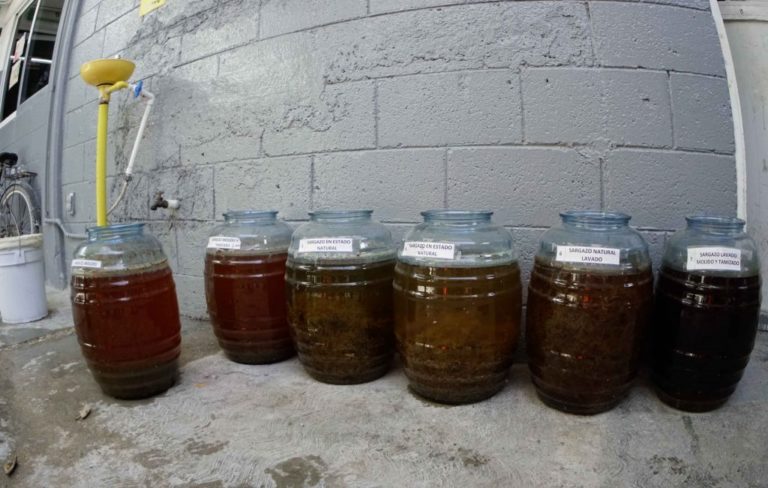
This research will help to generate the treatment of organic waste in the Xcaret park. Primarily, the use of sargassum generating biogas as renewable energy, becoming an option with a guarantee of profitability that will significantly help as an environmental contingency plan against sargassum. The facilities maintenance and resources needed to carry out this project are provided by Xcaret to the researchers.
It is teamwork that nature and climate changes have led us to perform as part of our daily operation, but we know that it is necessary to take care of our beautiful destination. We don’t do it just to be able to continue receiving our dear visitors, but also to help our important ecosystems.
Do you have any questions about sargassum in Xcaret? Do not hesitate to write to us.
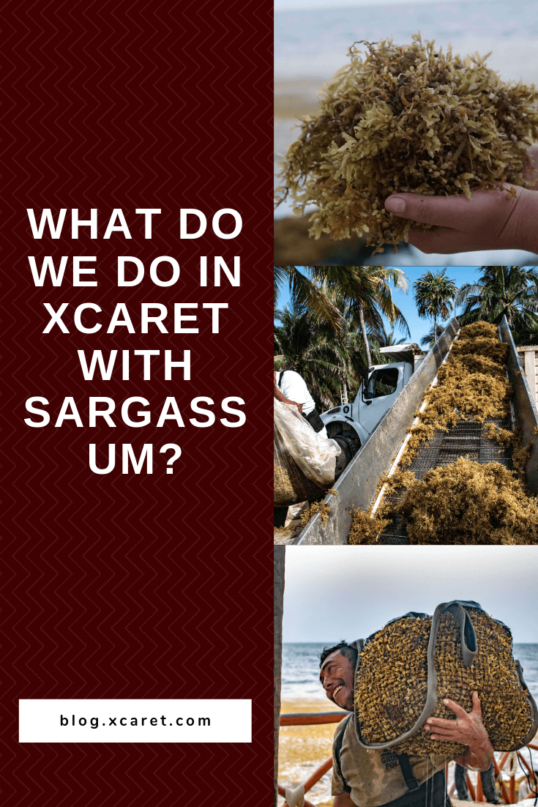
Read more about activities in Xcaret:

Editora de Blog Xcaret. Comunicóloga que ama viajar, escribir, tomar fotografías y estar siempre rod...

Posts Relacionados
Grupo Xcaret
Hotels




